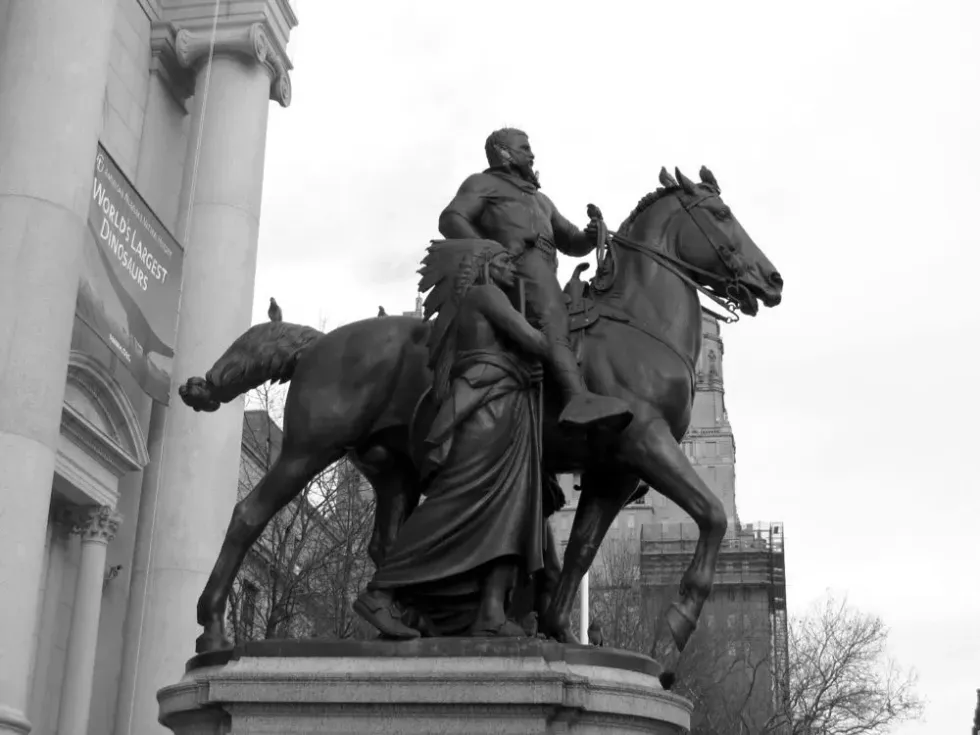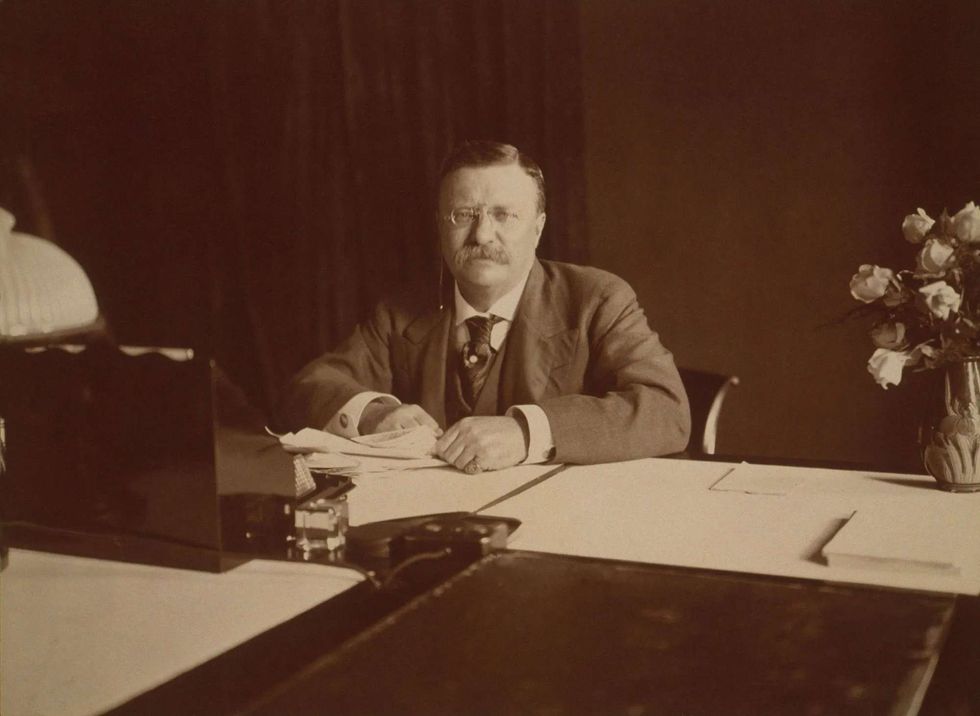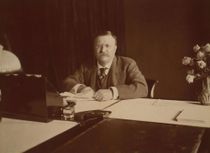What Did Teddy Roosevelt's Early Life Look Like? Amazing Read!
Theodore Roosevelt was a politician, naturalist, conversationalist, and a well-known writer and historian of his time.
He was the 26th president of the United States from 1901. Before that, he served as a vice president under President William McKinley from March to September 1901.
He became president after William McKinley's assassination. His political career started as the assistant secretary of the Navy under President McKinley.
He helped to plan the successful Spanish-American War both with naval attacks and the Rough Riders in Cuba and was recognized as a war hero. Roosevelt left the Navy to lead the Rough Riders.
In 1898 he was elected as the 33rd Governor of New York City through the New York Assembly. Roosevelt left the Governor's position to stand in election alongside McKinley and then led the vice presidency under him in 1901 in the White House.
Theodore Roosevelt was a statesman and naturalist who created the United States Forest Service and was one of the key figures creating national parks. He won the Nobel Peace Prize for negotiating and effectively ending the Russo-Japanese War while engaged in foreign affairs.
He was also a cowboy, rancher, author, historian, and soldier. At 42 years old, Roosevelt was the youngest president ever in the White House. He was a man of action, and under Roosevelt's presidency, the embodiment of America's spirit was at its pinnacle in the early 1900s.
Roosevelt, a lifelong naturalist, was instrumental in establishing numerous national parks and monuments, including the Grand Canyon. He attended Harvard College, where eventually Roosevelt sought to become a professor and Columbia Law School. In 1912, Roosevelt decided to part with Republican Party leader William Howard Taft and Roosevelt campaigned to bring the dominant Republican Party into the political mainstream.
Teddy was a sick child with severe asthma who overcame his illness in part via a disciplined lifestyle. He had terrible asthma, and his health was so bad that he could have died from a simple cold. On the other hand, Roosevelt did not let his ill health prevent him from leading an active life.
In reality, he attributed his strenuous existence to having lived a long and healthy life. Despite being diagnosed with asthma at a young age, Teddy Roosevelt overcame it through perseverance.
Roosevelt believed that his illness resulted from excessive alcohol intake, and he vowed never to drink again. With this pledge in mind, he looked for alternate ways to keep athletic and healthy.
Theodore Roosevelt was the youngest ever president, and his administration's commitment to fiery ideals and active preservation is still felt today. He built the Panama Canal, founded national parks and monuments, and was an outspoken proponent of wildlife conservation. Roosevelt died in 1919 due to a deterioration in health before Roosevelt began to campaign for another Republican nomination election.
If you enjoyed this article, why not find out more fun Teddy Roosevelt facts, or learn about Michelle Obama here on Kidadl!
Teddy Roosevelt's Early Life
Considered one of the greatest men in the entire history of the United States, Theodore Roosevelt became the US president in 1901 following William McKinley's assassination.
The White House appointed Roosevelt as the 26th president, and he was the youngest president ever. Roosevelt was a man of action who typified America's spirit at its peak in the early 1900s. A longtime naturalist, Roosevelt being an admirer of natural history helped create several national parks and monuments, including the Grand Canyon.
Teddy was a sick child with severe asthma but partially overcame his sickness with a disciplined lifestyle. According to his mother, Martha Bulloch Roosevelt, he had severe asthma, and his state of health was so precarious that he could have died from a common cold.
Roosevelt did not let his poor health stop him from living a vigorous life. In fact, he credited his strenuous life as a major reason for living a long and healthy life.
Despite suffering from asthma at an early age, Teddy Roosevelt managed to overcome it through determination. He firmly believed that his condition was caused by over-consumption of alcohol, and he swore never to drink. With this promise in mind, he sought out alternative methods to stay fit and healthy, including boxing and wrestling.
Teddy started boxing at Harvard University to fight off his asthma symptoms. He attended Harvard College, where he eventually joined Columbia Law School.
In 1912, he parted with the Republican Party leader William Howard Taft in order to bring the dominant Republican Party into the political mainstream. He was a Republican Party leader and a supporter of the Progressive Era.
He was also a renowned World War I soldier, having received the Nobel Peace Prize in 1906 for Theodore Roosevelt's part in negotiating the end of the Russo-Japanese War. Roosevelt was 42 at the time when he became president, but that did not stop him from helping the country.
A strong believer of conservationism', he created several parks and monuments, including the Grand Canyon. It was natural since Roosevelt had always been fond of nature.
Roosevelt was an American hero who worked tirelessly to protect the natural world for future generations.
Teddy Roosevelt's Early Political Career
Theodore Roosevelt was a politician, naturalist, conversationalist, and a well-known writer and historian of his time.
He was the 26th president of the United States from 1901-1909. He graduated from Harvard College, and then he later joined the Columbia Law School.
A Progressive reformer who sought and strived to move the dominant Republican Party into the political mainstream, he broke away and parted from party leader William Howard Taft in 1912.
Theodore Roosevelt was not only a politician, naturalist, and a writer and historian but he was also known to be a leader of the Republican Party and an advocate for the Progressive Era.
He was also a respectable and decorated veteran of World War I, winning the Nobel Peace Prize in 1906 for his role in negotiating and effectively putting an end to the Russo-Japanese War. Theodore Roosevelt was born into a privileged, wealthy family of politicians.
However, he was an ill child. Young Roosevelt suffered from asthma and even had to sleep in a chair because he could not breathe lying down.
Roosevelt used this adversity as an opportunity to push himself. He exercised every day, even when his sickness meant he could barely walk, and eventually overcame his illness entirely.
Prior to becoming president, Roosevelt rose to prominence as a military hero and novelist. Sagamore Hill National Historic Site is named for his residence in Oyster Bay, New York.
Theodore Roosevelt grew up in New York City in 1858. H suffered from asthma in his youth, pneumonia three times, and eye illnesses.
However, he had an optimistic view of life. He referred to his asthma as 'a minor issue' and went on to live an active lifestyle, becoming the 26th president of the United States with the promise of 'a square deal for every man'.

What is Teddy Roosevelt most famous for?
Theodore Roosevelt was a politician, a naturalist, an avid conversationalist, and a prolific writer who penned books on history, travel narratives, and hunting.
Theodore Roosevelt was a great political leader well versed in military tactics but foremost he was a conservationist, naturalist, explorer, hunter, author, and politician. He is called by many, the Father of Conservation.
He had a wide array of achievements and interests. He was a strong advocate for social justice, civic rights, and personal freedoms. His leadership in many important areas of both American and international life has had a lasting impact. He was a famous American activist, writer, and historian who was the 26th president of the United States from 1901-1909.
Roosevelt formed the Republican Party in the early 20th century. Theodore Roosevelt was an ill child, to the point where he almost died as a toddler. As a teenager, he overcame the odds, making a name for himself at Harvard and eventually rising through the ranks to become a Civil Service Commissioner.
He was elected Governor of New York in 1898, just as the US was becoming embroiled in a war with Spain. In 1901, he left office to serve as president of the United States following his brief stint as the vice president, a post he held until 1909.
Roosevelt used his adversity as an opportunity to push himself. He exercised every day, even when his sickness meant he could barely walk, and eventually overcame his illness almost entirely.
Prior to becoming president, he also rose to prominence as a military hero and novelist. He became so famous that the Sagamore Hill National Historic Site was named as his residence in Oyster Bay, New York.
In 1904 president Roosevelt introduced Roosevelt Corollary in addition to the famous Monroe Doctrine. The Roosevelt Corollary stated that the USA would intervene as a last resort to make sure that other nations fulfilled their international obligations, and did not violate the USA's rights or bring a foreign conflict to America.
Born in New York City in 1858, he suffered from asthma in his youth, pneumonia (three times), and even had eye illnesses. But he was very optimistic despite all his troubles - he referred to his asthma as being a 'minor issue' and went on to live an active lifestyle, becoming the 26th President of the United States.
A Republican, he was the youngest US President in history at just the age of 42. This is not very young per se, but it is pretty young for someone to have reached the top of one of the most powerful government offices in the world.
An outspoken conservationist, he helped create several national parks and monuments which are world-famous, and protected and maintained to this day.
Inspiring Acts From Teddy Roosevelt's Early Life
Theodore Roosevelt was a politician, naturalist, conversationalist, writer, historian, and the 26th president of the United States. He was a man of action who typified the spirit of America in the early 20th century.
Before becoming President, Roosevelt had already gained fame as a war hero and an author. What came next only added more fame and respect to his name.
His home in Oyster Bay, New York, is now known as Sagamore Hill National Historic Site. Theodore Roosevelt born in New York City in 1858 had asthma during his youth, contracted pneumonia three times, and underwent surgery for eye infections. However, his attitude towards life was forever positive.
Despite suffering from asthma at an early age, Teddy Roosevelt won at life through determination.
He managed to stay in good health and follow healthy practices like never drinking alcohol (since realizing it might be the root of his health concerns), all the while making career advancements, being an activist and contributing to his country, and realizing his full potential.
Teddy started boxing at university to fight off his asthma symptoms.
He had a wide array of achievements and interests. He was a strong advocate for social justice, civic rights, and personal freedoms.
As a president, vice president, and assistant secretary of the Navy, his leadership in many important areas of both American and international matters has had a lasting impact. Roosevelt eventually resigned from the navy, but before that, Roosevelt led the Rough Riders through the international war with Spain.
Roosevelt won and was appointed as the 33rd Governor of New York State right after his return.
He overcame the odds as a teenager, then he overcame the odds at Harvard, and eventually, he rose through the ranks to then become a Civil Service Commissioner of the New York City Police Board. He led the life of a fighter and came out a winner by all means.
He was elected Governor of New York State in 1898, as the US was embroiled in the war with Spain.
In 1901, he left his office as the Governor to serve as vice president of the United States and subsequently the president later in the same year, the latter was a post he held until 1909.
Theodore Roosevelt is one of the United States' most celebrated presidents, thanks to his commitment to conservation. A lifelong naturalist, Roosevelt doubled the number of national parks and protected sites by creating as many as 18 monuments and 51 wildlife refuges as president.
As a politician, Roosevelt never lost an election and continued to hold political office until he died at the age of 60. Theodore Roosevelt's Memorial, known as the Roosevelt Museum, has stood for over 80 years on Riverside Drive, at the very edge of the Hudson River in New York City.
The grand, solemn Doric temple commemorates one of the most popular presidents in American history, reflecting his legacy as a national hero, adventurer, soldier, hunter, naturalist, conservationist, author of 35 books, and holder of many important political offices.
The Neoclassical memorial was designed by John Russell Pope in 1929.
Here at Kidadl, we have carefully created lots of interesting family-friendly facts for everyone to enjoy! If you liked learning about Teddy Roosevelt's early life, then why not take a look at children's books from the '90s and Battle of Trenton facts.
We Want Your Photos!
More for You
Bachelor of Science specializing in Nautical Science

Ayan BanerjeeBachelor of Science specializing in Nautical Science
Thanks to his degree in nautical science from T.S. Chanakya, IMU Navi Mumbai Campus, Ayan excels at producing high-quality content across a range of genres, with a strong foundation in technical writing. Ayan's contributions as an esteemed member of the editorial board of The Indian Cadet magazine and a valued member of the Chanakya Literary Committee showcase his writing skills. In his free time, Ayan stays active through sports such as badminton, table tennis, trekking, and running marathons. His passion for travel and music also inspire his writing, providing valuable insights.
Disclaimer
1) Kidadl is independent and to make our service free to you the reader we are supported by advertising. We hope you love our recommendations for products and services! What we suggest is selected independently by the Kidadl team. If you purchase using the Buy Now button we may earn a small commission. This does not influence our choices. Prices are correct and items are available at the time the article was published but we cannot guarantee that on the time of reading. Please note that Kidadl is a participant in the Amazon Services LLC Associates Program, an affiliate advertising program designed to provide a means for sites to earn advertising fees by advertising and linking to Amazon. We also link to other websites, but are not responsible for their content.
2) At Kidadl, we strive to recommend the very best activities and events. We will always aim to give you accurate information at the date of publication - however, information does change, so it’s important you do your own research, double-check and make the decision that is right for your family. We recognise that not all activities and ideas are appropriate for all children and families or in all circumstances. Our recommended activities are based on age but these are a guide. We recommend that these ideas are used as inspiration, that ideas are undertaken with appropriate adult supervision, and that each adult uses their own discretion and knowledge of their children to consider the safety and suitability. Kidadl cannot accept liability for the execution of these ideas, and parental supervision is advised at all times, as safety is paramount. Anyone using the information provided by Kidadl does so at their own risk and we can not accept liability if things go wrong.
3) Because we are an educational resource, we have quotes and facts about a range of historical and modern figures. We do not endorse the actions of or rhetoric of all the people included in these collections, but we think they are important for growing minds to learn about under the guidance of parents or guardians.







